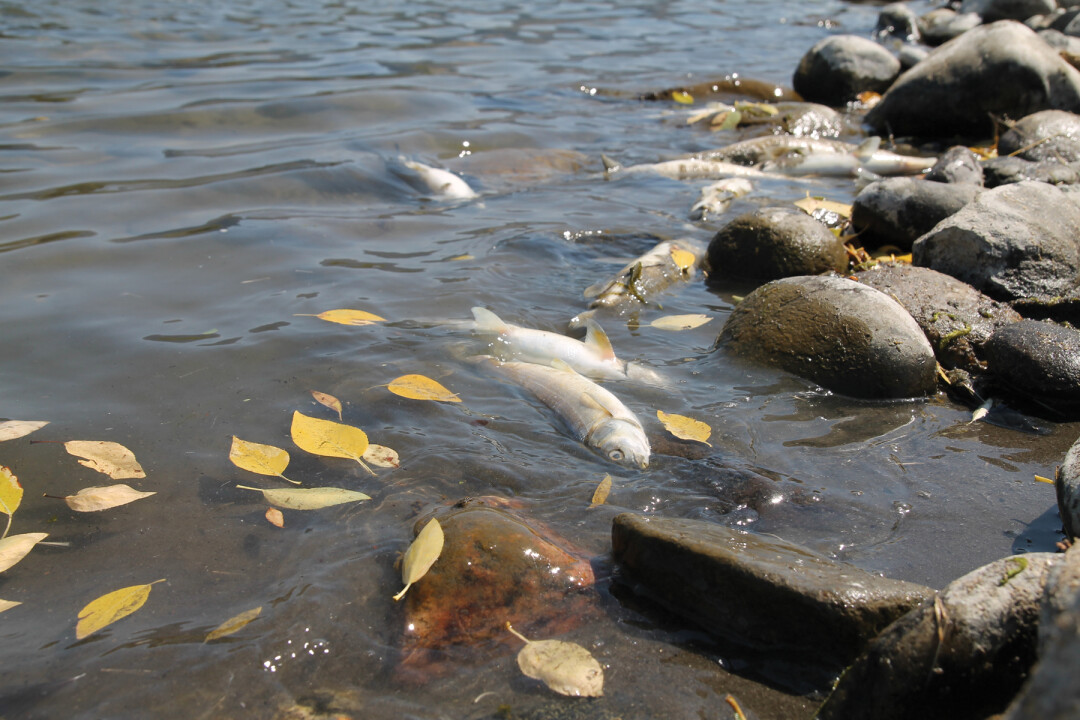Parasite Brings Halt To Yellowstone River Activity
Pat Hill | Friday Sep. 2nd, 2016
Montana’s governor Steve Bullock flew over the upper Yellowstone in the Paradise Valley on August 23, four days after Montana Fish Wildlife and Parks shut the river down tight after learning of thousands of dead Whitefish in the waters of the renowned trout fishery.
The governor saw some of those dead Whitefish during his flight, and afterwards, speaking to a small crowd at Mallard’s Rest Fishing Access Site in the Paradise Valley (where the smell of dead fish was unavoidable), said that “The impact of this [fish kill] goes far beyond the water’s edge.” The Treasure State’s outdoor recreation economy is responsible for more than 64,000 Montana jobs and nearly $6 billion in yearly economic activity.
Dead Whitefish began showing up in the Yellowstone River in early August. FWP reported on Aug. 19 that “To date, we have counted more than 4,000 dead Whitefish and a small numbers of other species including Rainbow Trout, Yellowstone Cutthroat, Longnose Suckers, Sculpin, and Longnose Dace.” The FWP sent “live, dying and dead fish” collected on those floats to the U.S. Fish & Wildlife Service Bozeman Fish Health Center, and testing results showed that the fish had fallen victim to proliferative kidney disease. On that same day (Aug. 19), FWP made the decision to close the Yellowstone River and its tributaries to all recreational activity from Gardiner down to Laurel, a water stretch measuring nearly 190 miles in length.

“We recognize that this decision will have a significant impact on many people,” said FWP Director Jeff Hagener in a press release. “However, we must act to protect this public resource for present and future generations.”
Proliferative kidney disease kills between 20-100 percent of the fish it strikes. It is spread by a highly contagious parasite (Tetracapsuloides bryosalmonae) which spends most of its life as a microscopic spore (though in reality it is a multi-celled microscopic animal whose closest relatives include jellyfish, corals, and sea anemones). Washington, Oregon, Idaho, Canada and Europe have seen this parasite in their waters. Different strains of the parasite exist, and FWP is trying to determine which one has shown up in the Yellowstone. The most recent (and geographically the closest) deadly parasite infection of this type occurred in eastern Idaho, on the South Fork of the Snake River, as well as the Teton River and the Henry’s Fork of the Snake.
The parasite affects fish most when river conditions include low flows and high water temperatures, such as those recorded in the Yellowstone this August. Flows in the river are about 300 cubic feet per second above record lows, and temperatures have been recorded in the mid-to-high 60s, at least 10 degrees above where the parasite is known to affect fish. FWP says that their fish specialists have never witnessed a fish kill of this magnitude. They think that this is a new infection in the Yellowstone drainage, leaving the fish less immune to the parasite’s effect simply because they’ve never been exposed to it.
“We’re still seeing mortality increasing,” Eileen Ryce, FWP’s hatchery bureau, said during the Mallard’s Rest press conference with the governor on Aug. 23. “And that’s a concern to us.” The infectious spores are showing up in fish in extremely high densities. Ryce theorized that the high load of spores may actually be “shocking” the fish to death. That high density count could also make the parasite easier to transport via humans or animals, and some believe that the parasite may have hitchhiked to the Yellowstone from Idaho’s infected waters via a boat or a fisherman’s boots. The high density of the parasite in the Yellowstone led to the decision to close the river down to all activity until more is learned about the situation, which is being monitored daily. The closure will likely be in place until river conditions improve and fish stop dying.
In addition to the closure on the Yellowstone, FWP is asking for the public’s assistance in preventing the spread of this parasite by properly cleaning (CLEAN.DRAIN.DRY) all equipment prior to moving between waterbodies (i.e., boats, waders, trailers). FWP has also set up two Aquatic Invasive Species decontamination stations along I-90 near the affected area in an effort to help reduce the chance of this parasite moving to other rivers. One is near Jackson Creek, between Bozeman and Livingston. Another is near Greycliff, east of Big Timber.
FWP rules to enforce such river closures are temporary emergency measures that must be re-examined within 120 days, but the agency noted that that some of the Yellowstone’s tributaries, and even the Yellowstone itself, may re-open before that time. Even when the river is deemed fit for recreation again, the parasite will probably persist in the river system.
“We don’t expect this parasite to disappear,” Ryce said. Montana FWP is reluctant to make any certain judgements without further research.
“We must be guided by science,” said Governor Bullock. “Our state cannot afford this infectious disease to spread to other streams and rivers and it’s my responsibility to do everything we can to stop this threat in its tracks and protect Montana jobs and livelihoods.” And responsibility also falls upon everyone who uses Montana’s rivers, streams and lakes to do all they can to protect our valuable watersheds.
| Tweet |
